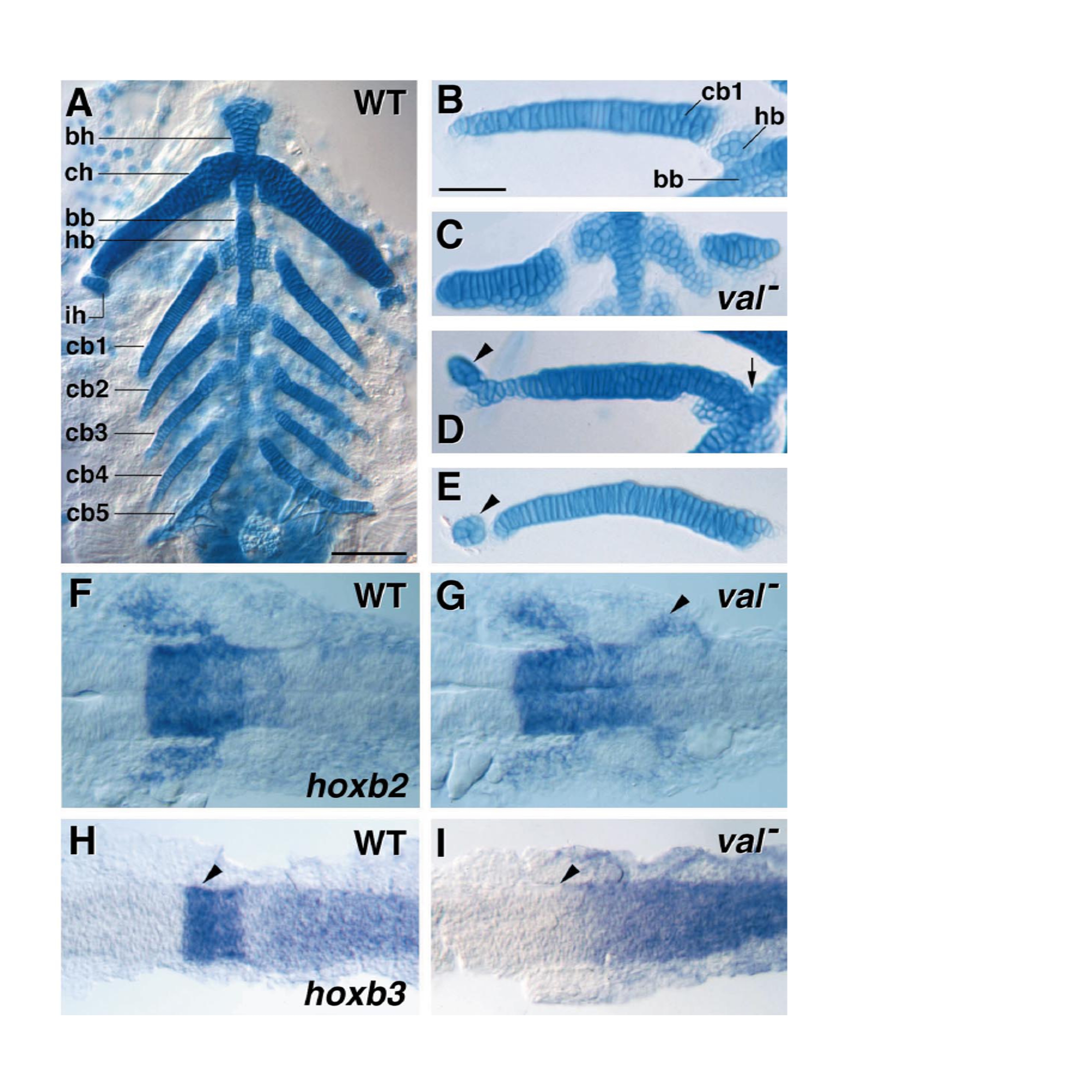Fig. 6 Cartilage phenotypes and hox gene expression in WT and val mutants. (A–E) Ventral views, anterior to the top, of flat-mounted cartilages in 7-day-old larvae (from Moens et al., 1998). (A) The WT pharyngeal segments 2–7. The hyoid segment (second pharyngeal segment) uniquely contains a small interhyal (ih) cartilage. At this stage, there is no separate hypohyal cartilage, the serial homolog of the hypobranchials. The ceratohyal (ch) is distinctively larger in size than its segmental homologs, the ceratobranchials (cb1–5). Ceratobranchials are tapering elements, as shown in B for cb1 (third pharyngeal segment) in another WT preparation at higher magnification. (C–E) The cartilages in the same (third) segment in three individual val mutants. The principal element, normally a ceratobranchial is often truncated and thickened, now more like a ceratohyal (C). Separate hypobranchials may be missing (arrow in D), and small interhyal-like elements are sometimes present (arrowheads in D and E). (F–I) hox gene expression in WT (F, H) and val (G, I) mutants, dorsal views with anterior to the left (from Prince et al., 1998). (F, G) hoxb2 at 19 h (20-somite stage). (H, I) hoxb3 expression at 14 h (10-somite stage). The more anterior gene hoxb2 (F, G) is ectopically expressed in neural crest that will populate the third pharyngeal segment (arrowhead in G). The more posterior gene hoxb3 (H, I) normally has a distinctive domain of strong expression in rhombomeres 5 and 6, and this domain is missing in the mutant (arrowheads).
Reprinted from Developmental Biology, 233(2), Kimmel, C.B., Miller, C.T., and Moens, C.B., Specification and morphogenesis of the zebrafish larval head skeleton, 239-257, Copyright (2001) with permission from Elsevier. Full text @ Dev. Biol.

